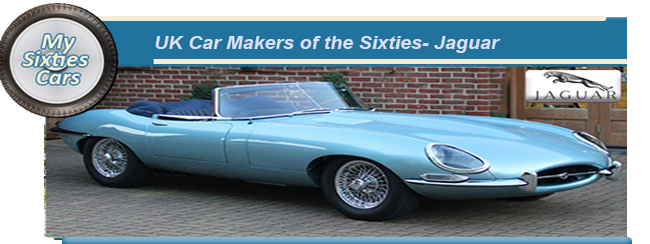
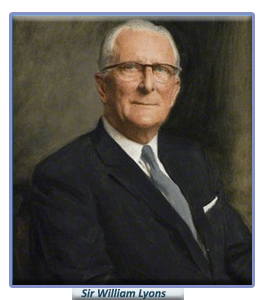 It was there that Billy Lyons, Blackpool born and raised, decided to form a company, initially in partnership with a friend and neighbour.
It was there that Billy Lyons, Blackpool born and raised, decided to form a company, initially in partnership with a friend and neighbour.
Their simple plan was to fill a niche in the market -to manufacture sidecars for motorcycles.
Showing considerable lack of vision, Billys partner, didn't last the course and their partnership was soon dissolved.
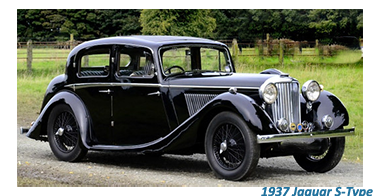 Lyons, only 21, was left to go it alone to manage this first venture, but reamined undaunted, detremined to take maximume advantage of his engineering skills and intrepid eye for style.
Lyons, only 21, was left to go it alone to manage this first venture, but reamined undaunted, detremined to take maximume advantage of his engineering skills and intrepid eye for style.
His plan was simple- if he was going to be involved in the manufacture of something so basic as motorcycle sidecars, they would not only be soundly and solidly constructed but would also be aesthetically pleasing.
Their simple plan was to fill a niche in the market -to manufacture sidecars for motorcycles.
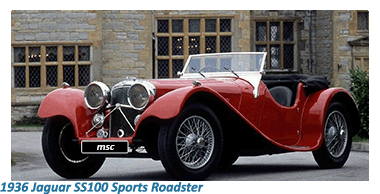 Their simple plan was to fill a niche in the market -to manufacture sidecars for motorcycles.
Their simple plan was to fill a niche in the market -to manufacture sidecars for motorcycles.
Lyons’ sidecars, manufactured under the Swallow label, were very well received and sold steadily, providing a young man with the confidence to diversify into manufacturing motor vehicles.
Their simple plan was to fill a niche in the market -to manufacture sidecars for motorcycles.
By the early Nineteen Thirties S.S. Models, as Lyons named his car manufacturing concern, got underway, producing compact cars based on the Austin 7 Swallow, in open and saloon versions.
Their simple plan was to fill a niche in the market -to manufacture sidecars for motorcycles.
![]()
Once again the emphasis was on style, and the first Swallow “ mini” began to take a share of the market, particularly in the North West of England.
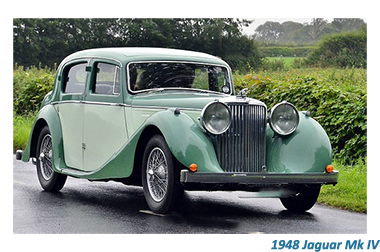 S.S. Models next big step forward was to form a working relationship with the Standard Motor Company to custom manufacture both the engines and chassis according to SS design and specifications that would allow the Lyon’s company to attach their own bodies.
S.S. Models next big step forward was to form a working relationship with the Standard Motor Company to custom manufacture both the engines and chassis according to SS design and specifications that would allow the Lyon’s company to attach their own bodies.
The car bodies were in-house designed and manufactured, according to a sports car theme and were the subject of considerable approval.
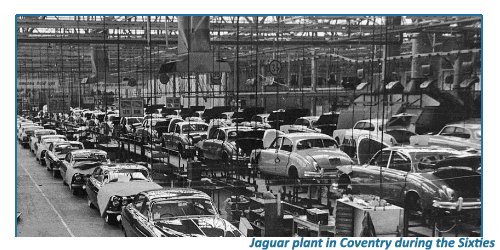 To add a little flair. Lyons decided to include the title Jaguar in the company, and from the mid-30s onwards, all of the cars which he produced were marketed under the SS Jaguar label.
To add a little flair. Lyons decided to include the title Jaguar in the company, and from the mid-30s onwards, all of the cars which he produced were marketed under the SS Jaguar label.
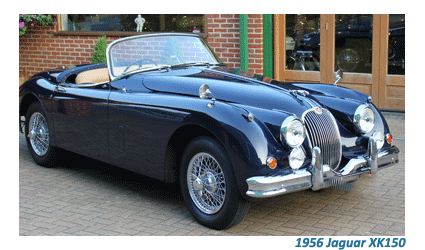 Towards the end of the Thirties, SS Jaguar launched the SS100 sports car, which was the subject of tremendous critical praise thanks to its winning combination of exotic good looks and excellent performance.
Towards the end of the Thirties, SS Jaguar launched the SS100 sports car, which was the subject of tremendous critical praise thanks to its winning combination of exotic good looks and excellent performance.
Going into the Sixties, Jaguar were offering a choice of six basic models. These were the 2-4-, 3.4- and 3.8-litre Mark II saloons, the big 3.8-litre Mark IX limousine and the sporting 3.4- and 3.8-litre XK 150 machines.
![]()
And so Jaguar cars came to the end of the decade, all set for the introduction of a new V8 -engine range to replace the remarkably successful XK six-cylinder in-line unit.
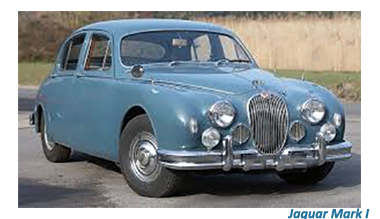 Ranging from the 240, through the XJ6 series, to the 420G and the E-Types, Jaguar offered luxurious, high-performance cars at really inexpensive prices, true to their long-standing marketing slogan “Providing Grace, Space, and Pace.”
Ranging from the 240, through the XJ6 series, to the 420G and the E-Types, Jaguar offered luxurious, high-performance cars at really inexpensive prices, true to their long-standing marketing slogan “Providing Grace, Space, and Pace.”
> 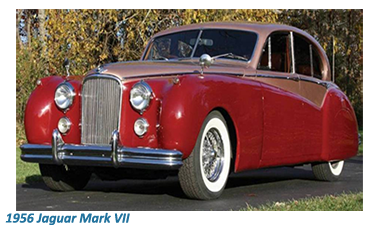 Sir William Lyons, the legendary co-founder and chairman of Jaguar Motors was never one to rest on his laurels, and his astute business sense told him that they were changes in the offing.
Sir William Lyons, the legendary co-founder and chairman of Jaguar Motors was never one to rest on his laurels, and his astute business sense told him that they were changes in the offing.
The increased competition that needed to be faced, particularly from the rapidly developing Asian car industry, convinced Sir William that the autonomy that his company had enjoyed for more than four decades could not continue indefinitely.
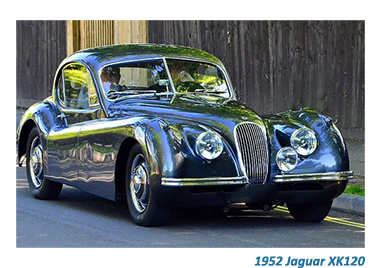 As a result, Lyons accepted an offer from the British Motor Corporation (BMC) to amalgamate with them to form British Motor Holdings Limited (BMH).
As a result, Lyons accepted an offer from the British Motor Corporation (BMC) to amalgamate with them to form British Motor Holdings Limited (BMH).
This brave decision meant that by the end of the Sixties, Jaguar was far from the same company than they had been at the beginning, and the iconic models that they produced during the post-war years when the company was at its peak would rarely be equalled in the future.
UK5






